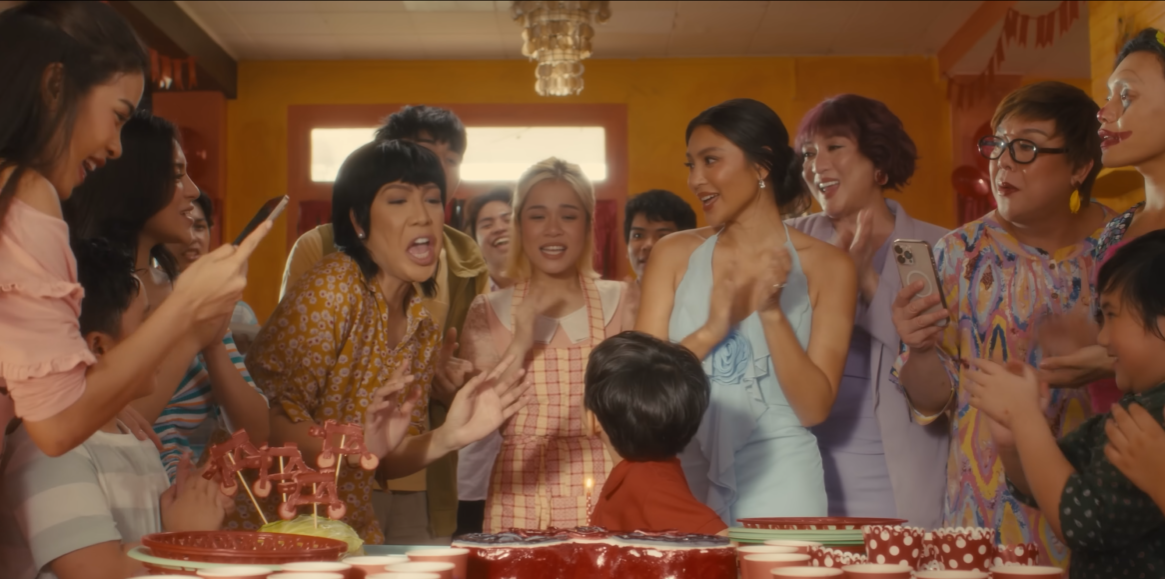'Mallari' REVIEW: Still Clings to Cliché Tropes But Impresses with Ambitious Storytelling
'Mallari' REVIEW: Still Clings to Cliché Tropes but Impresses with Ambitious Storytelling
Piolo Pascual in three different roles
In the early 1800s, the province of Magalang, Pampanga witnessed a string of unsolved murders that puzzled both the townsfolk and the authorities for over a decade. Surprisingly, the perpetrator turned out to be the least suspected one—a parish priest named Juan Severino Mallari. This marked him as the first documented serial killer in the Philippines, allegedly responsible for the deaths of 57 individuals in the area.
Historian and psychiatrist Dr. Luciano Santiago, in his book "Kapampangan Pioneers in the Philippine Church," alleges that Mallari committed these murders in an attempt to cure his mother from a curse. In 1840, he was found guilty and sentenced to hang, becoming the first Filipino priest to face execution.
Now, wouldn't that be an interesting story to adapt into a film? Screenwriter Enrico Santos (who also penned the 2023 MMFF entry, Rewind) and director Roderick Cabrido (Clarita, U-Turn) attempt to take on this horrifying real-life case since it actually holds potential for a great historical-horror slasher flick. However, instead of pursuing that route, they transform it into an ambitious genre-bending project that involves time travel and a manananggal. I mean, it’s pretty wild.
Piolo Pascual as Father Juan Severino Mallari
In Mallari, Piolo Pascual (in his horror film debut) portrays three different roles across three different timelines: the infamous serial-killing parish priest during the late Spanish colonial period, a war documentarian in a post-WWII era, and a doctor living in the present day.
These timelines interconnect generationally: the 19th-century setting depicts the horror of the serial killings and the gradual corruption of an initially innocent priest striving to protect his mother from a curse. In the 20th century, a descendant of the Mallari lineage becomes obsessed with unraveling the mystery of Father Mallari, attempting to document on camera what he has learned. Meanwhile, the present-day story focuses on a doctor grappling with the malevolent aspects of their family history while trying to make sense of the nightmares he keeps having.
Generational trauma is present here, as the characters from the 20th and 21st centuries bear the weight of the dark and violent history of their lineage, which threatens to resurface in their lives. Pascual’s character in the present day is determined to forge his own path, ensuring that he doesn't fall prey to the evilness that is plaguing their family tree.
Two out of three characters played by Piolo Pascual in the same scene together
I want to emphasize again that this isn’t solely a historical-horror slasher flick. It’s not even a straightforward movie. Mallari is quite grandiose in its storytelling, presenting multiple ideas while unfolding them in a non-linear fashion, attempting to blend psychological horror, supernatural fantasy, science fiction, history, romance, and family drama. If you think that’s too much, then you’re right. Did they pull it off with ease? Not quite. If you haven’t watched the trailer (like me), you will be surprised at how chaotic this film was, narrative-wise.
Cabrido and Santos aim to merge this disturbing piece of history with Filipino mythology, a time-travel twist, and themes of generational trauma. Some might argue that the focus should have been solely on the actual events in the 1800s and the slasher aspect. While I don't disagree, I still admire the script’s direction in making it distinct from the usual retelling of infamous historical events. Initially, the first two acts are perplexing, but as the story advances towards the third act, the tangled narrative starts to become clearer, eventually forming a cohesive whole.
The film's astonishing production design highlights diverse settings and characters across three different timelines, with a particular focus on portraying the 19th-century Spanish colonial period marked by frailocracy. However, of all three timelines, the storyline set in the 1940s and its corresponding characters are the ones that are relatively underexplored. While this timeline has the potential to enrich the narrative, the film predominantly revolves around the 1800s and the present day, leaving this one somewhat undercooked.
Piolo Pascual in one of the film’s disturbing scenes
A horror film, first and foremost, should provide audiences a skillfully crafted and terrifying experience. However, I can’t say the same for this film, as its attempt to deliver one falls flat.
Admittedly, there are some decent scares, but for the majority of its runtime, it seems to be trying too hard to frighten the audience, resulting in a sense of desperation. This is evident in its excessive use of jump scares. Disappointingly, it still clings to the same horror movie formula we’ve seen countless times, relying heavily on loud sounds to build a creeping tension that leads nowhere and ultimately becomes too predictable. As a result, these moments fails to evoke any fear in me, and I have hoped for a more subtle approach instead.
Regarding the performances, Piolo Pascual is magnificent here and proves that he can excel in horror movies too. This is arguably one of the best he’s ever done in his career, as his portrayal of three different characters with remarkable conviction is nothing short of amazing. But, of course, as amazing as he is, his co-stars still outshine him. Gloria Diaz and JC Santos, in particular, deliver their A-game performances that will surely be remembered for their intense commitment to their respective characters.
Despite the presence of cliché tropes, this serial killer horror film distinguishes itself as a testament to our local cinema’s ability to create daring and unconventional films that embrace a more adventurous storytelling path. Instead of opting for a straightforward depiction of the infamous case of the Philippines’ first documented serial killer, Mallari chooses a wild, albeit frustratingly complex, yet enjoyably ambitious approach that may or may not impress you.

















